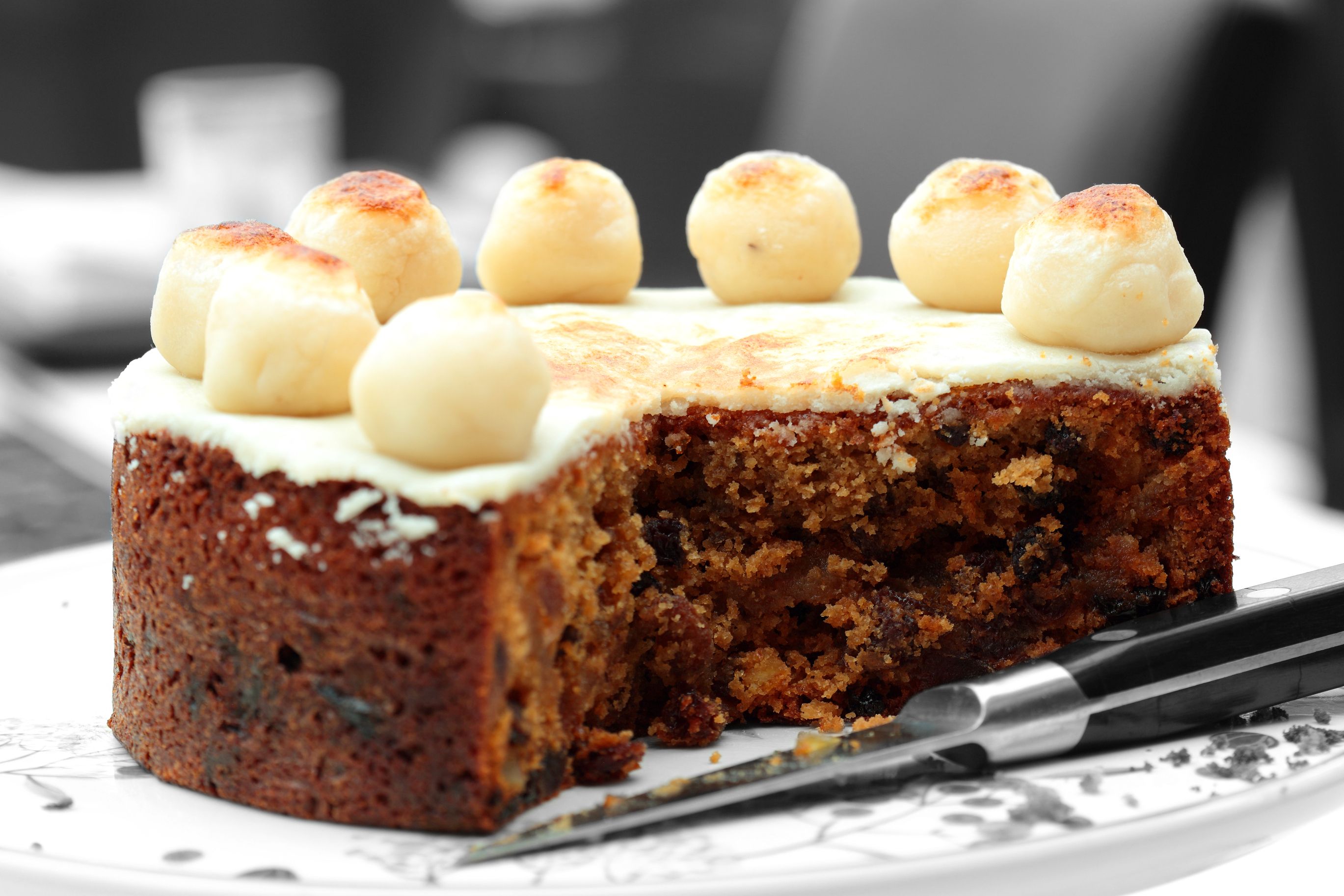If we were in Ireland this week, we’d all be scurrying to find the perfect gift for Mom. Mother’s Day, originally called “Mothering Sunday,” will be celebrated there with all the pomp and pampering mothers rightfully deserve. In previous generations, the gift of choice might have been a Simnel Cake, a rich fruit cake with a center and top layer of marzipan. The cake was probably introduced into Ireland by Anglo-Norman settlers in the twelfth or thirteenth century, while others claim the custom of preparing an enriched wheaten cake for Mothering Sunday, the fourth Sunday in Lent, might have been introduced into Ireland by Elizabethan settlers in the sixteenth and seventeenth centuries.
Tradition suggests that many apprentices and those in domestic service worked and lived away from home. On Mothering Sunday, they could have the day off and were encouraged to go home to visit their mothers. This was known as ‘’going-a-mothering,” and a special “mothering cake” was brought along to provide a festive touch. If the workers couldn’t go home, they liked to send the cake at Easter, but it had to be one that was sturdy enough to be sent by post. The Simnel Cake proved to be perfect for such a gift, and it has come to be something of an Easter tradition in Ireland too. The eleven marzipan balls placed around the edges of the cake are said to represent the twelve apostles minus Judas Iscariot, while more modern recipes use edible flowers or preserved fruits. Simnel Cake is lovely to serve at tea, and much like the traditional Christmas cake, it keeps well in an airtight container.
SIMNEL CAKE
SERVES 10 TO 12
1 cup golden raisins
1 cup dark raisins
1 cup currants
1/2 cup hot tea
2 tablespoons corn syrup
1 cup all-purpose flour
1/2 cup self-rising flour
4 ounces unsalted butter, at room temperature
1/2 cup light brown sugar
2 large eggs, beaten
1 (7-ounce) package marzipan, such as Odense brand
2 tablespoons apricot jam
Beaten egg, for brushing top
Confectioners’ sugar, for dusting
1. Preheat oven to 350°F. Coat bottom and sides of a deep 7-inch round pan or springform pan with nonstick cooking spray. Line bottom with waxed or parchment paper; line sides with a second piece.
2. In a large bowl, combine raisins and currants. Pour tea over; let sit for 5 minutes. Stir in corn syrup. Sift together flours in a small bowl.
3. In another large bowl, beat butter and sugar with an electric mixer until light and fluffy. Add eggs, one at a time, beating well after each addition. Stir in flours until smooth; stir in dried fruits and liquid.
4. Spoon half of batter into prepared pan; smooth top. Unwrap marzipan. Dust a work surface with cornstarch. Roll out one third of marzipan to a 6-inch round about 1/4-inch thick. Lift and gently place on top of batter. Spoon remaining batter on top and smooth again. Rewrap and return remaining marzipan to refrigerator.
5. Cover cake pan tightly with aluminum foil. Bake cake for 50 minutes; remove foil. Bake for 45 to 50 minutes longer, or until a skewer inserted into center comes out clean. Remove from oven; let cool completely on wire rack. Invert cake onto a baking sheet, remove paper; return cake to upright.
6. In a small saucepan over medium heat, or in a microwave oven, heat apricot jam until runny. Brush jam over surface of cake. Divide remainder of almond paste in half. Roll out a circle to cover the top of the cake with one half; form 11 small balls with other half. Place round on top of jam glaze; arrange balls around edge. Brush top with beaten egg.
7. Preheat broiler (or use a kitchen blowtorch to brown cake.) Place cake under broiler and broil until top is lightly browned (or use a kitchen blowtorch and move the flame constantly over surface until top browns). Let cool completely, dust top with confectioners’ sugar, and cut into slices. (The cake can be wrapped in plastic wrap and stored in an airtight container for up to 3 weeks, or frozen for 1 month).
Margaret Johnson’s “Recipes” page expands this year to “Ireland Hopping: Adventures in Food, Drink, and Travel.” For further details on her work, or to order a signed cookbook, visit www.irishcook.com








